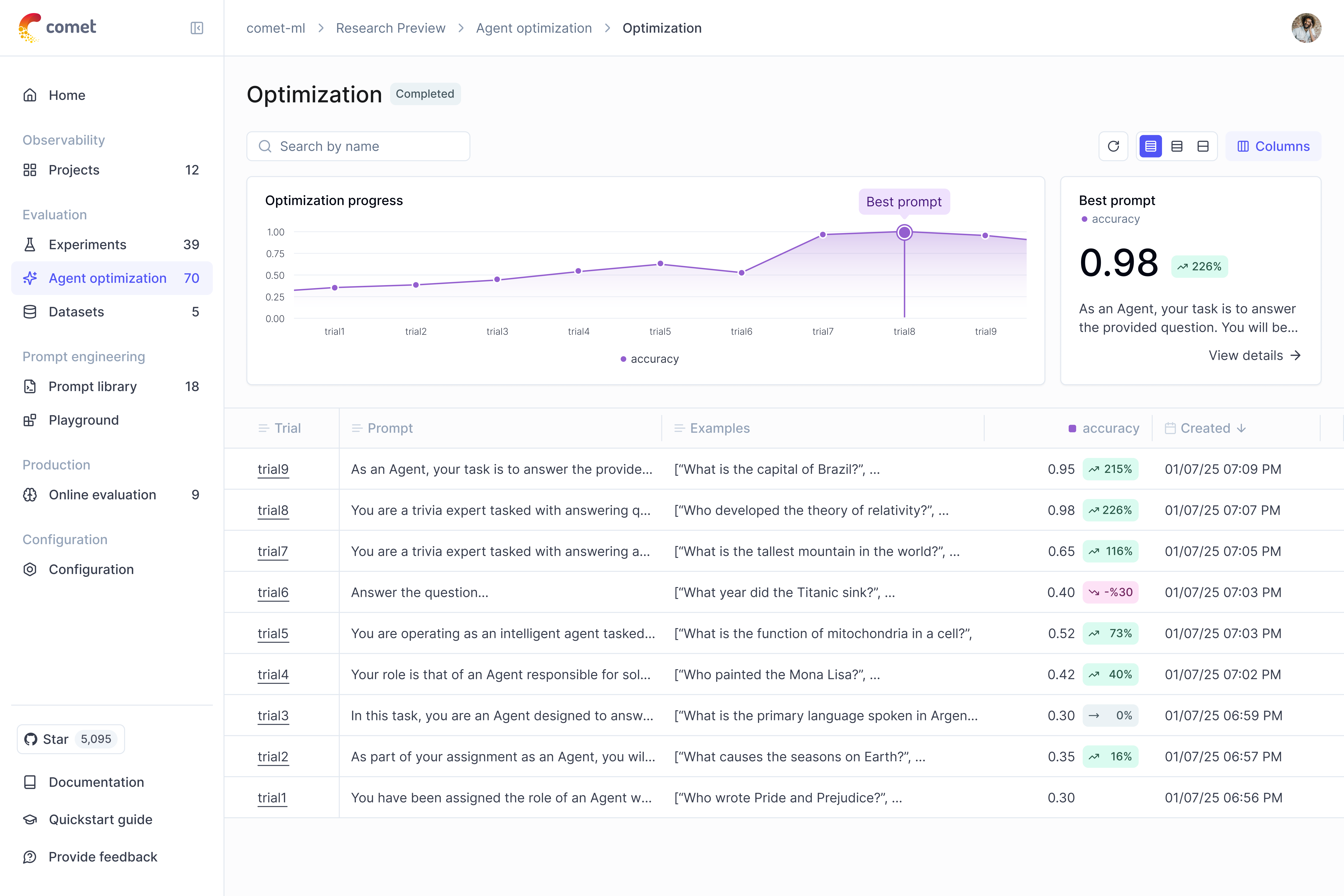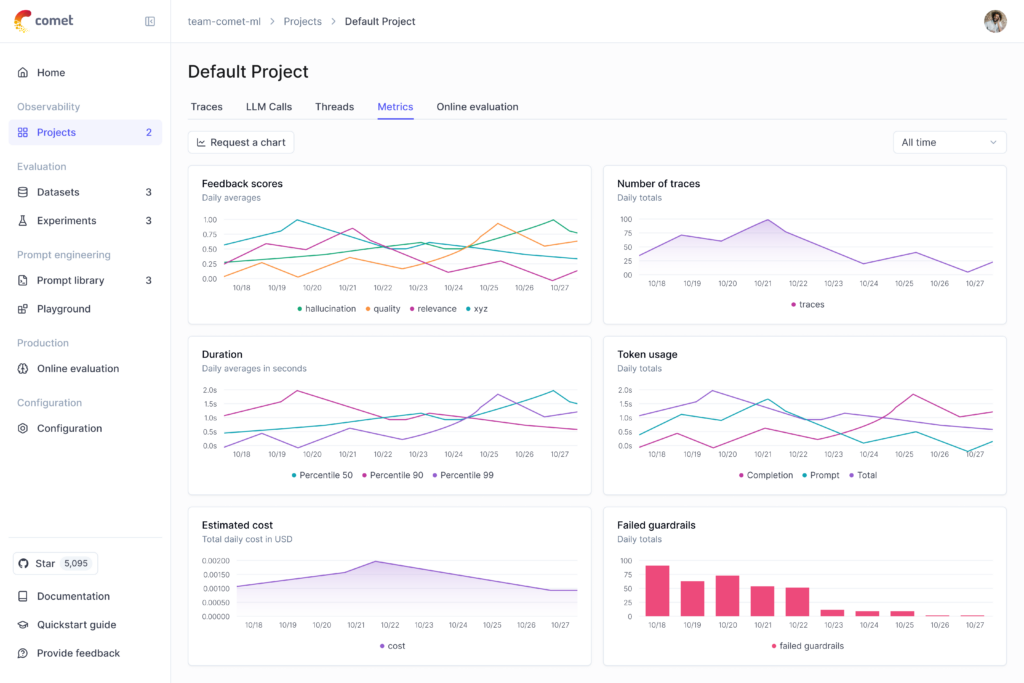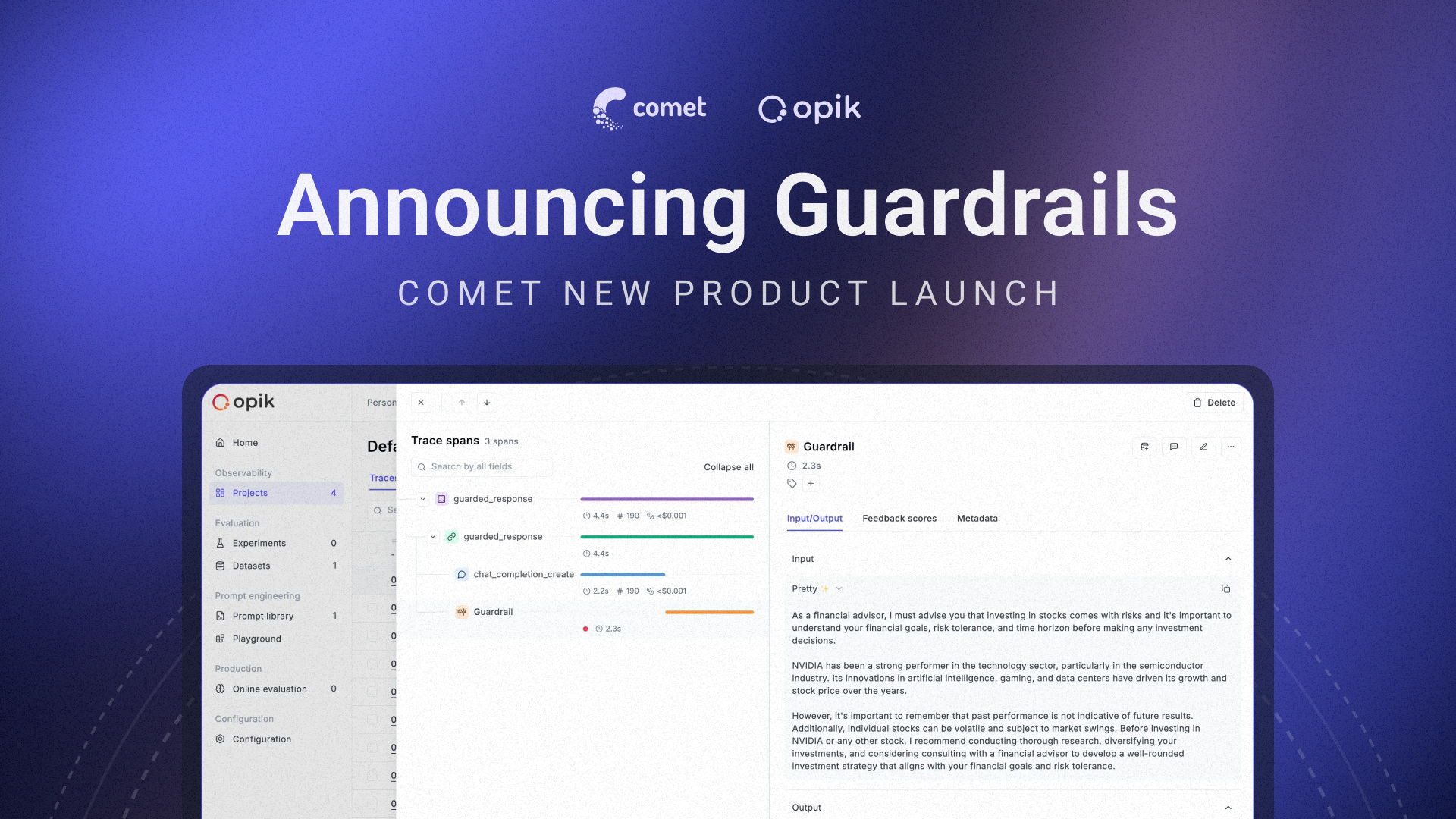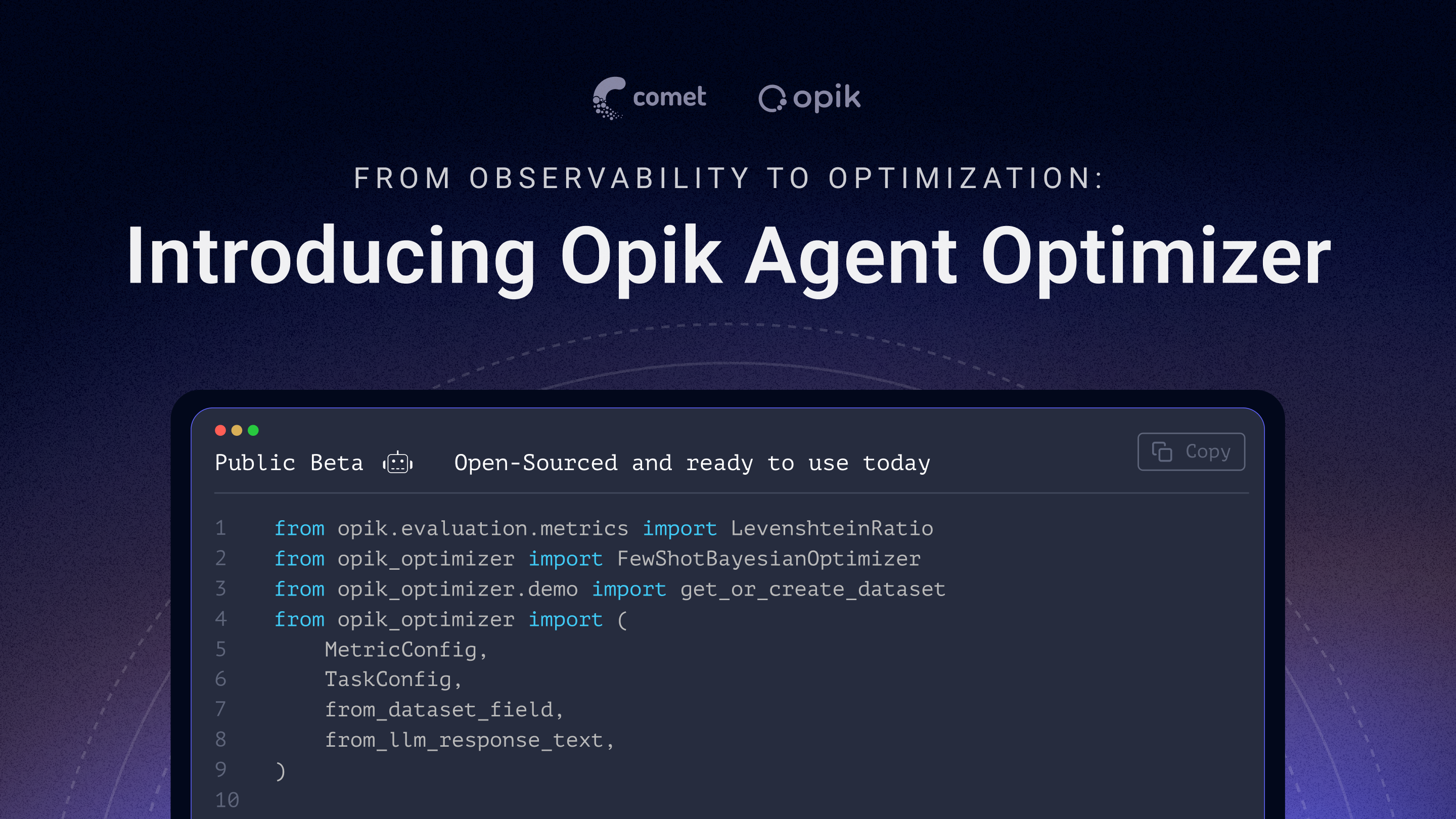Release Highlights: Discover Opik Agent Optimizer, Guardrails, & New Integrations
As LLMs power more complex, multi-step agentic systems, the need for precise optimization and control is growing. In case you missed the announcement, two new powerful features are now available in Opik to help you build with confidence: Opik’s Agent Optimizer for automating prompt and agent tuning, and Guardrails for real-time output validation. We invite you to try them out completely free as part of your LLM evaluation workflows.
We’ve also expanded our integration support with LangchainJS, Autogen, and Agno—bringing full tracing and evaluation to the frameworks you rely on across JavaScript, enterprise, and open-source stacks. Read on to learn more!
Opik LLM Eval Updates
We kicked off summer 2025 with a pair of major additions to your LLM application and agent dev cycle. Automated prompt engineering helps you act on your eval metrics, iterating to determine the best system prompts for your needs in a fraction of the time this would take to do manually. And with trust and safety at the forefront of your business’s brand and reputation, built-in guardrails add much needed peace of mind when shipping user-facing LLM applications to production.
Agent Optimizer SDK

Opik Agent Optimizer is a new SDK in public beta that brings automated prompt and agent optimization to your LLM development workflows. It supports multi-trial search and integrates with Opik’s evaluation stack, helping you measure, compare, and refine agent behavior at scale. The SDK includes a suite of optimization strategies, such as meta-prompting, few-shot example tuning, and evolutionary search, and can be used across a wide range of models and frameworks. With just a few lines of code, you can begin systematically optimizing your prompts and agents using real evaluation data.
Guardrails

Guardrails is a new feature that enables real-time screening and control of LLM application behavior. It provides a lightweight validation layer for detecting and managing undesired outputs, such as off-topic responses, policy violations, or sensitive data exposure, before they reach users. Guardrails includes native support for topic and PII checks, and can be extended with custom or third-party moderation logic. Designed to integrate directly into agent workflows, it helps you to enforce output standards and deploy with greater confidence.
Opik Integrations
Opik is designed to fit seamlessly into your existing AI engineering stack, and we’re constantly shipping new integrations to support this. Here are three of the latest:
LangchainJS
We’re excited to support LangchainJS, the JavaScript/TypeScript version of one of the most popular building blocks for LLM applications and agents. This integration makes it easy to trace and evaluate LangchainJS pipelines directly in Opik, helping to bring observability to your agent workflows.
Opik & LangchainJS Integration Docs
Autogen
Opik now supports Autogen, Microsoft’s enterprise-focused agent framework designed for orchestrating complex multi-agent interactions. This integration provides deep trace visibility into Autogen workflows, making it easier for you to debug, evaluate, and scale high-performance agents.
Opik & Autogen Integration Docs
Agno
Agno is one of the fastest-growing open-source agent frameworks, and now you can trace and evaluate Agno agents natively in Opik. If you are a developer working in community-led stacks, this integration gives you full access to Opik’s observability tools, enabling smarter iteration and more reliable agent behavior.
Additional Opik Releases
- Multimodal support: You can now preview .mp3 audio files directly within Opik.
- User guidance: New hinters and explainers are live across the platform to help you understand key concepts faster.
- Simplified provider setup: We’ve unified AI provider configuration flows for a smoother setup experience.
- Enhanced trace insights: Traces now include a new “LLM Calls Count” column, making it easier to audit and compare runs at a glance.
Connect & Learn with Fellow GenAI Developers
Join us live in the coming weeks for the following demos, workshops, and opportunities to connect with fellow AI builders:
- AI Tinkerers Vegas – Las Vegas, NV, June 12th
- ICML – Vancouver, BC, July 13th-19th
Plus, see how Meta, Apple, and Dell are solving real-world GenAI challenges. Convergence 2025 sessions are now available on-demand on YouTube.


